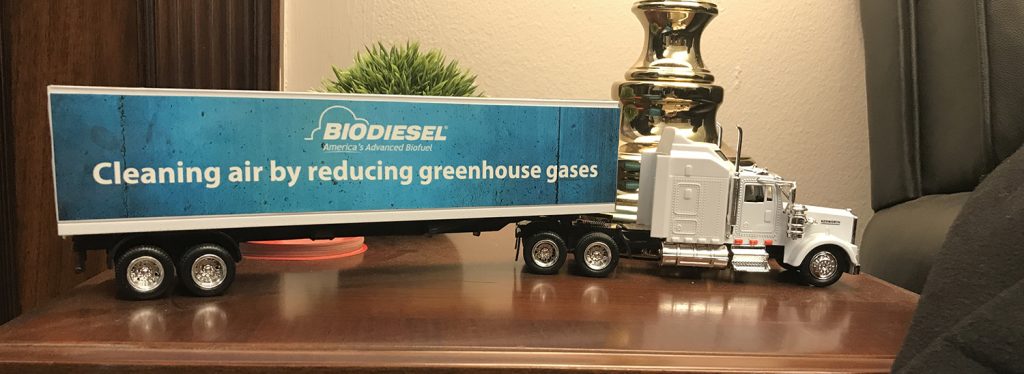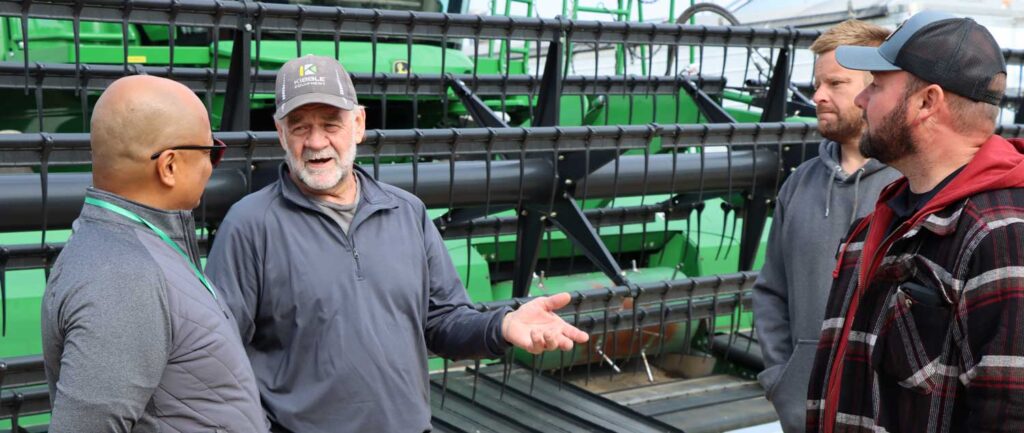California is the nation’s largest biodiesel market, consuming about a quarter of the biodiesel used in the United States. But that distinction didn’t happen overnight, Tom Verry, director of outreach and development for the National Biodiesel Board (NBB), told a group of state soybean leaders during an NBB-sponsored agricultural tour of California.
“We’ve put extensive money and time and research into creating a biodiesel market demand in California,” Verry said. “After all those investments and resources, California is now on track to use a third of the nation’s biodiesel. This provides additional value for your investment in biodiesel.”
Verry recalled the Golden State didn’t initially welcome soybean-based biodiesel with open arms. But times have changed. California’s biodiesel consumption has skyrocketed from the initial 14 million gallons annually to 600 million gallons in 2017, with a trajectory toward one billion gallons by 2024. By 2030, the state is projected to consume two billion gallons of biodiesel.
“We have that flipped around because we generated relationships and data,” Verry says. “It wasn’t easy and it won’t ever be easy, but California is a wonderful market for soybean producers.”
For MSGA Director Chris Hill, understanding the inner workings of California, with its myriad of complex environment and labor regulations, was a vital part of the farm tour.
“They’re our customers and we have the ability and infrastructure to supply them with our product,” says Hill, a Jackson County, Minn., farmer. “It’s different here with regulations, but there are more than 400 crops grown in California, and we both share a belief biodiesel is a renewable and reliable energy source.”
Ryan Lamberg, executive director of the California Biodiesel Initiative, addressed the biodiesel luminaries during a bus ride to California’s agriculture hub in the Central Valley. Lamberg lived in the Bay Area for 20 years, and was at the forefront of biodiesel usage in the state. Back then, Lamberg remembers Californians renewable fuel advocates were more likely to use waste grease from restaurants for fuel. In retrospect, Lamberg believes California’s biodiesel proponents had a misguided view of Midwest farmers. Education and cultivating relationships with farmers changed those perceptions.
“We targeted the wrong people, but now we’re all on the same team,” he said. “The issue is about petroleum reduction, and that’s something we can all agree on.”
Lamberg says he hopes to bring California biodiesel influencers to the Midwest later this year to see firsthand how soybean-based biodiesel is produced in Minnesota.
“We need to do more to bring Californians to the Midwest,” he says. “It’s important to get people to the farm to see what it takes to make biodiesel.”
NBB Shelby Neal presented a federal legislative update, and championed Minnesota’s role as a leader in the biodiesel movement ahead of the highly anticipated May 1 implementation of B20.
“Minnesota has been the benchmark for biodiesel for a long time,” Neal says. “They saw the writing on the wall.”
Wednesday, the tour went to Ventura to visit the Channel Island State Park . Former faculty manager Kent Bullard worked with the National Park Service for 30 years; in 2000 he was instrumental in bringing biodiesel to 23 national parks, including a 56-foot research vessel on Channel Islands that ran on B100 (100 percent biodiesel).
“I’m a big believer in biodiesel and renewable fuels and I like to ‘walk the talk,'” Bullard says. “To grow our own fuel is a great thing.”
On the tour’s final day, the farmer leaders toured Red Rock Ranch family farm in Five Points, Calif., and later visited with local growers. The day was highlighted by a discussion panel at the Biodico Sustainable Biorefineriers.
“There’s a lot for us take back home with us,” says MSR&PC Director Jim Willers. “I think we all came away excited about the biodiesel market in California and how it relates to Minnesota. Basically, we need each other.”
Hill and Willers were joined by MSR&PC Director Ron Obermoller and Mike Youngerberg, Minnesota Soybean’s Senior Director of Product Development and recipient of NBB’s 2018 Impact Award.
“This really was a ‘Biodiesel Legends” tour,” Verry says. “Many of the people who helped spur the national biodiesel movement were here this week to see our hard work is paying off in California. We’ve come a long way, but there’s always going to be more work to be done in California. We can’t rest on our laurels.”







